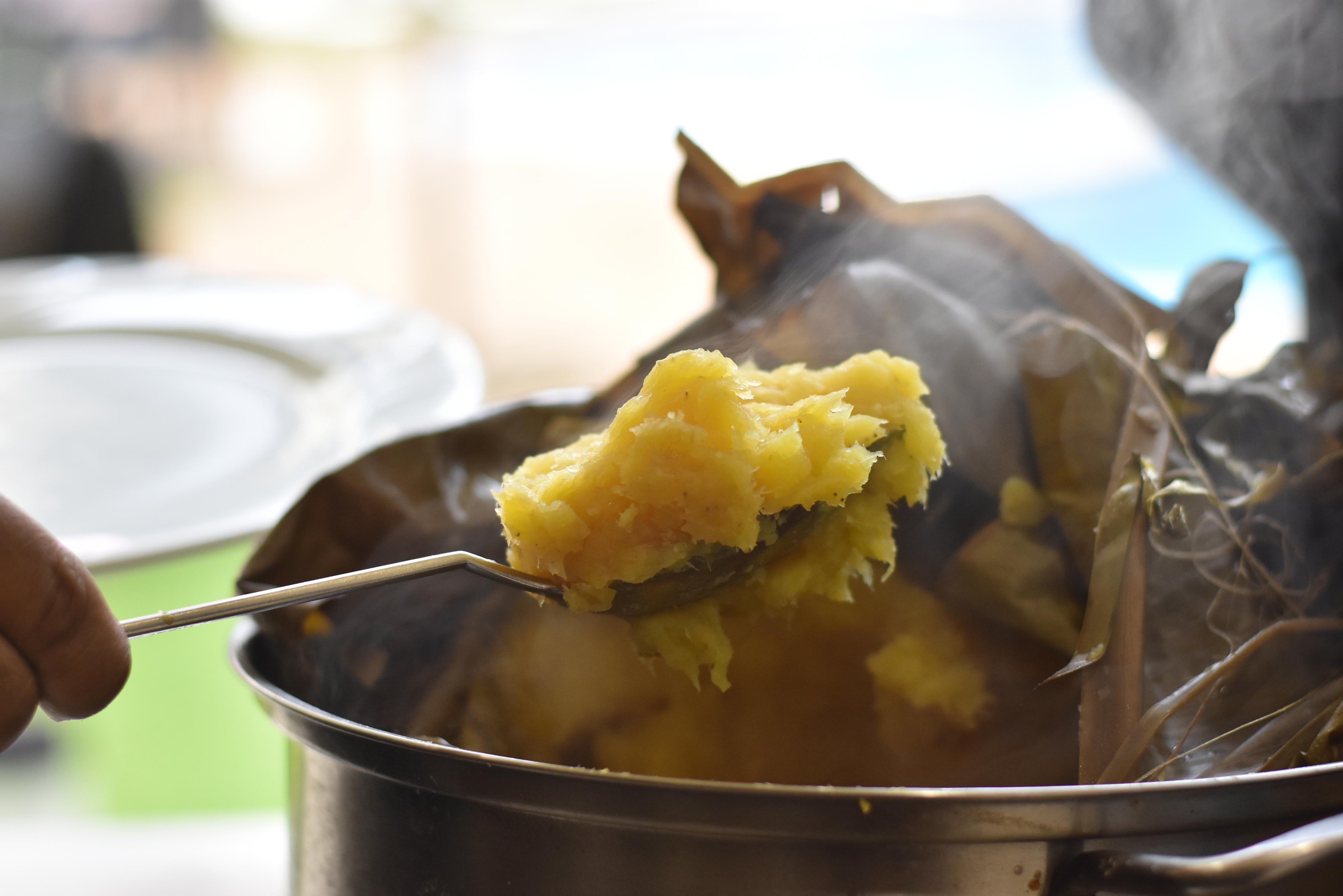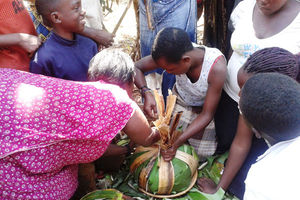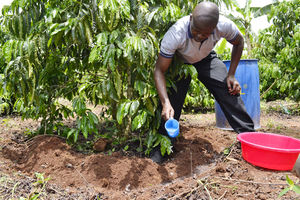
When deciding whether to steam, roast or boil matooke, it is important to choose a method of cooking that will preserve its nutritional benefit. PHOTO | PROMISE TWINAMUKYE
Amid the trendy superfoods and exotic ingredients, a humble hero deserves attention; matooke, also known as the green banana. Matooke has been a staple food for centuries in many cultures, particularly in Buganda.
Ivan Philip Baguma, a nutritionist at Nella, says its benefits extend far beyond its cultural significance. Packed with nutrients, fibre, and antioxidants, matooke is a powerhouse food that can boost your digestive health, support your immune system, and even help manage blood pressure and cholesterol levels. Yet, it remains a largely underrated ingredient in modern diets.
Matooke is a starchy dish mainly eaten in Uganda and some East African countries. The dish is made by peeling, boiling in water or steaming the bananas in banana leaves and mashing them. It is usually served with all kinds of food and sauce.
Matooke consists mainly of water (about three-quarters) while a quarter is carbohydrates, usually broken down by the body into simple sugars for energy.
Nutritional benefits
Green bananas are known for their high fibre content. Foods rich in fibre ease the digestion process and reduce the risk of constipation. Additionally, fibre keeps blood sugar levels well controlled.
Baguma also advises that one can control their cholesterol levels by consuming more raw bananas. This promotes the proper functioning of the heart and reduces the risk of stroke. It may also increase one’s recovery rate after a stroke.
Raw bananas contain essential vitamins and minerals and are specifically rich in vitamin C and vitamin B6. Vitamin C is a mineral that is good for healthy hair and skin. It can also boost your immune system. It also contains antioxidants that can protect your body from damage.
On the other hand, vitamin B6 assists with converting food into energy. It is good for heart health and improves brain function. Other nutrients and minerals in matooke include fibre, potassium, phosphorus, magnesium, zinc and many others.
Fibre
The fibre content present in these bananas is a key to losing weight. Eating food rich in fibre keeps you full for a longer time, reducing appetites and cravings. Including a raw banana in your meal also works to prevent you from snacking on unhealthy food if you feel full after consuming it.
Afraa Kampere, a nutritionist at Life Link Hospital in Kampala, says consuming bananas is a good way to get potassium. Foods rich in potassium are healthy for the kidneys and also keep your blood pressure in control.
“Patients with chronic kidney disease are advised to soak the bananas overnight before consuming them. Soaking bananas helps to leach out some of the potassium to reduce the amount of the mineral that would be harmful to individuals with kidney disease,” she says.
Starch
Matooke are also a good source of starch and since they are gluten-free, they are an excellent alternative to wheat. They are also a good consistency for soups and porridges. Additionally, plantain is used as a binder in certain confectionaries.
Matooke is not only a source of a good boost of energy but the potassium in it also helps regulate blood pressure levels and reduce the risk of heart disease.
Incorporating it into your diet
Green bananas are versatile and can be served with any meal for breakfast, lunch, or dinner, Kampere says.
Matooke is available in the form of flour but one can make porridge by boiling or steaming matooke, then mashing and mixing with milk or water for nutritious breakfast porridge. One can also blend cooked matooke with yoghurt, fruit, and milk for a healthy smoothie.
You can also fry the bananas and have them as a snack. Slice matooke into rings, stir fry and sauté with vegetables and spices, then serve as a side dish.
“Mash cooked matooke and mix with flour, eggs, and spices for a tasty breakfast pancake. You can also use cooked matooke in place of some flour to make nutritious bread or cake,” she adds.
Besides steaming, boil matooke with vegetables and spices to make a comforting soup. Boil or steam matooke, then blend into a puree for a healthy baby food or snack.
How best to cook matooke
When deciding whether to steam, roast or boil matooke, it is important to choose a method of cooking that will preserve its nutritional benefits.
Steaming matooke in its peel helps retain micronutrients that might have otherwise been lost through cooking. Steaming is also known to make the matooke thoroughly soft, Baguma notes.
Boiling matooke is another good way to cook it, but make sure not to over-boil so that its nutrients are preserved. After boiling matooke, mash and steam it again before serving. When cooking matooke, add water to help it cook and retain its nutrients. You can also use the water as gravy.
Cooking time for matooke varies depending on the method of cooking used and the desired texture. When boiling matooke, depending on the amount of bananas, it is recommended that you cook it on a stable medium flame until it turns yellow.
Roasting green bananas brings out a smoky flavour and can be roasted with the peel-on for added flavour. In the raw state, matooke contains prebiotic fibre that feeds good gut bacteria, promoting a healthy gut microbiome and may be a better source of vitamin C than when cooked.
"However, raw matooke can be difficult to digest for some people, especially if not ripe enough. It is essential to choose ripe matooke and start with small portions to test your tolerance," Baguma warns.


